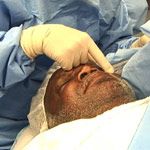Diabetes is hitting us too hard – it’s time to fight back.
Aboriginal and Torres Strait Islander Australians have the fourth highest rate of type 2 diabetes in the entire world.
Figures vary, but it’s estimated that the prevalence of type 2 diabetes among Indigenous Australians is anywhere from two up to 10 times that of non-Indigenous Australians, and that anywhere between 10 to 30 per cent of the Aboriginal and Torres Strait Islander population has type 2 diabetes.
Not only is diabetes more common in the Indigenous community, it also begins at an earlier age in Aboriginal and Torres Strait Islander people.
Even more tragically, the Aboriginal and Torres Strait Islander death rate from diabetes is believed to be up to 17 times that of non-Indigenous Australians.
But why are so many Aboriginal and Torres Strait Islander people getting – and dying of – diabetes?
Some researchers believe that Indigenous Australians have a genetic susceptibility towards diabetes – that our bodies were designed to support our traditional hunter-gatherer lifestyle, and can’t cope as well with a modern, Western diet, with its high sugar and fat content.
Combine this with modern Western lifestyles, which are making us more physically inactive, we’re becoming more overweight and obese, which makes us more at risk of diabetes. An obese person is 10 times more likely to develop type 2 diabetes, and around six out of 10 Aboriginal and Torres Strait Islander people are currently overweight or obese.
Other contributing factors to the high rates of diabetes in Indigenous communities include poor standards of living, low birth weight and reduced access to medical care.
Treatment and management
For people with type 2 diabetes, proper treatment and management can keep the condition under control, but this needs to be kept up for the rest of your life. If you don’t manage your diabetes properly, it can lead to serious complications, such as heart attack or stroke, eye disease, blindness, kidney disease, kidney failure and nerve damage, which can result in limb amputation.
What can I do?
The best thing you can do for yourself and your family is to take steps now to avoid getting type 2 diabetes in the first place – eat a low-fat, high fibre diet, get plenty of exercise and maintain a healthy weight. Speak to your doctor about what else you can do to keep yourself and your family safe from diabetes.
By doing this today, you’re not only helping to keep yourself and your family healthy, you’re guaranteeing a healthier community for tomorrow.
For more information about diabetes go to www.diabetesaustralia.com.au






Comments are closed.